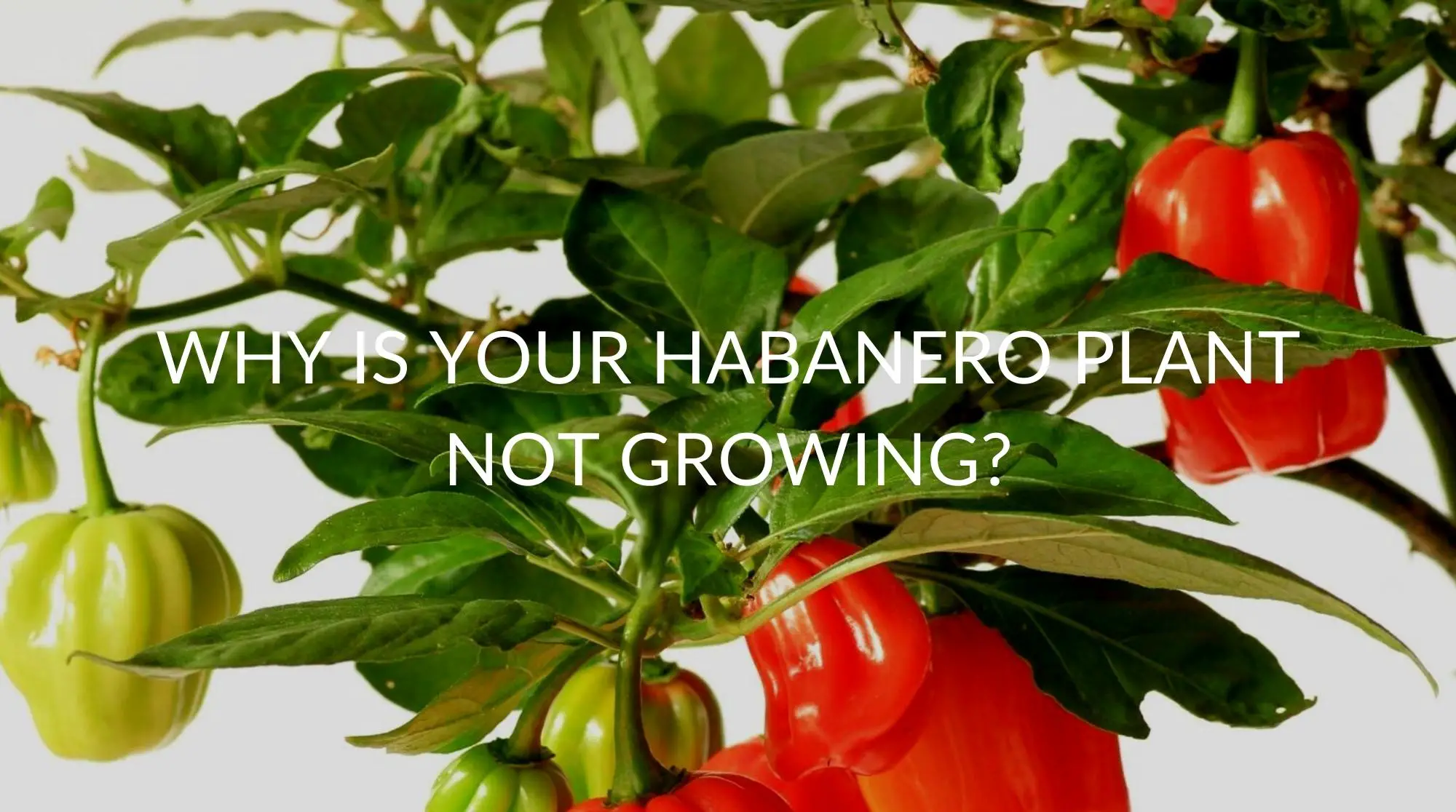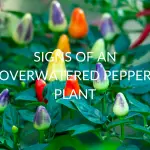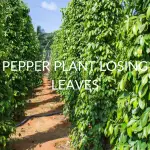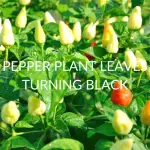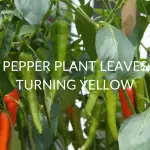Your Habanero plant may not be growing for a number of reasons.
Pepper plants can be finicky, and you need to know what you’re doing to grow one successfully. Like all plants, the basics of what they need are good soil, proper sunlight, and the right amount of water.
Beyond that, there are other things to consider to make sure your Habanero plant is not stunted, such as planting at the right time and transplanting correctly.
This article will go over the reasons your plant might not be growing and how to speed up the growth of your Habanero. Nothing is too complicated to fix, and it’s never too late!
Why Are Your Habaneros Not Growing?
Peppers Don’t Like to Grow in Cold Soil
If you plant your peppers too early, they will become stunted. If you plant later in the season, the peppers will produce more than plants that were put in the soil too early in the season. You would think that the longer they’re planted, the more they’ll produce, but this isn’t the case.
Overwatering
Overwatering can hurt a plant just as much, if not more, than underwatering can. Don’t flood your Habanero. Keep the soil moist but not drenched, as drenched soil will cause root rot and damage your plant.
With pepper plants, you want to let the soil dry out completely before watering again.
Insufficient Lighting
Your pepper plant needs enough light to grow. Habaneros like to be in full sun and not in a shaded area. If your plant doesn’t get enough sunlight, it can’t perform the photosynthesis necessary to keep it alive.
However, if temperatures reach above 90 degrees F, you should use a shade cloth because sunburn will also stunt the growth of your Habaneros.
Not Enough Nutrition
Plants need a total of 20 chemicals to do well. Besides nitrogen, which most people know, other crucial nutrients include carbon, hydrogen, and oxygen. Air and water provide these. The other 16 nutrients are supplied by soil and fertilizer.
Although it may be tempting to load your pepper up with nutrients, too much nitrogen will actually cause your plant to focus on its leaves at the expense of the peppers.
Insufficient Soil
Pepper plants need good drainage, so you don’t want soil that is clay-heavy or has too much organic material. The soil pH should be between 6.2 and 7.0 because the nutrients needed by pepper will be blocked by pH levels that are too high or too low.
Now cover the soil with mulch, or if you don’t have mulch, you can use leaves, grass clippings, pine needles, hay or straw, or compost.
Blossom End Rot
Blossom end rot is when your peppers rot. It is caused by a calcium deficiency; calcium is necessary to help form the cell walls inside the pepper. If the cell walls aren’t strong enough, they will collapse and cause the pepper to rot.
Inadequate Pollination
Your pepper might not be fruiting if it’s not receiving the pollination it needs. You can hand pollinate your peppers with your finger, a cotton swab, or a tiny brush. You can also gently shake your plant.
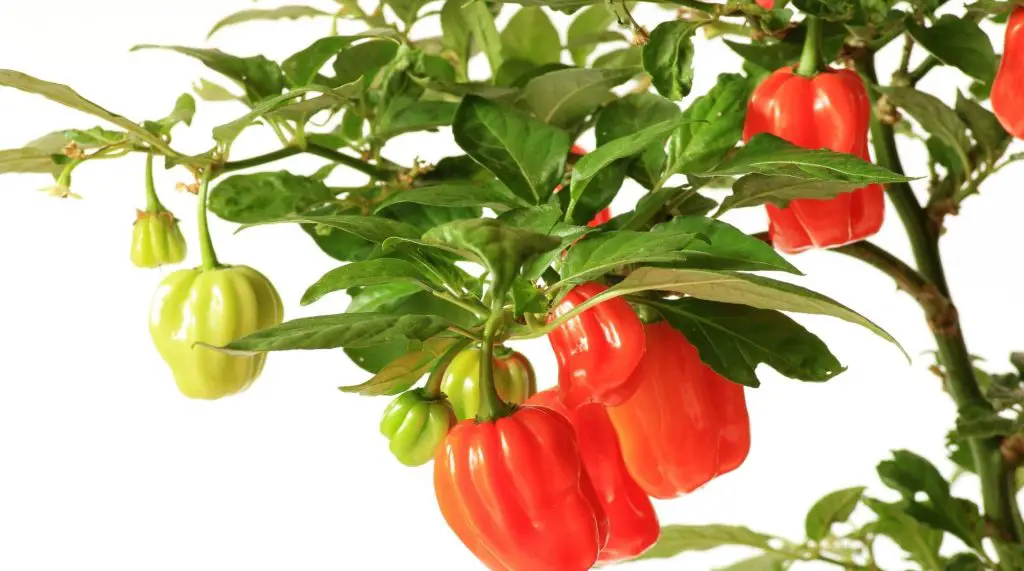
How To Make Your Habaneros Grow Faster
Start Your Habanero Seeds Early
Keep them around 80-90 degrees F for the best germination. Most peppers take between 1-3 weeks to germinate, but some can take longer. Use a seedling heat mat if you’re concerned about keeping them warm enough!
Start Habanero Seeds Indoors
Peppers have a long growing season, so it’s wise to get a head start. You can use lights indoors to help them grow until the sun is around for long enough. Don’t plant them outside until it’s warmed to over 60-70 degrees F every night.
Fertilize Regularly
Some signs that your plant isn’t getting enough fertilization are yellow or curling leaves, which can indicate stunted growth. Do your research when buying fertilizer for your peppers because you don’t want to overdo any nutrients.
There are even some fertilizers that come in a pack with different kinds for different stages of development!
Prune Your Plant
Prune your plant early, when it’s about 1 ½ – 2 months old. This will encourage it to be bushier. It will recover and quickly start growing new shoots and usually more flowers too.
Pruning is an often overlooked step in growing Habaneros and can really help speed up the growth of your plant.
Transplant Correctly
The point of transplanting is to give your plants more room to grow, but if you wait too long, they can become root-bound. When you transplant your peppers, their root systems should just be starting to reach the bottom of their old containers.
Transplanting correctly makes sure that your plant never gets stunted by its root system.
Use a Large Enough Container
If your Habanero plant is in a small pot, then your plant will be small as well. When the root system runs out of room, the plant will become stunted and unable to grow anymore. Peppers need at least 3-5 gallons of soil to grow.
If you’re unsure, choose bigger.
Pick Peppers When They Ripen
Harvesting peppers when they’re ripe lets the pepper plant put its energy towards growing and making more peppers. But keep in mind that hot peppers get hotter the longer you let them ripen, so it’s best to find a middle ground.
FAQ
Why Are My Habanero Plants So Small?
One reason your plants might be so small is if you grew the seedlings under LED lights that were too bright. This can permanently stunt the growth of your peppers.
Another reason is if you’re overwatering your plants. If your plants are sitting in soggy soil, they are essentially drowning. You want damp soil, not soggy. Make sure the medium can drain well.
Lastly, if your plants don’t have 6-8 hours of full sun, they will be small. But if it gets to be over 90 degrees F, you should use a shade cloth to avoid sunburn.
Recap
There are many reasons your Habanero plant may not be growing.
If the soil is too cold, it will be unable to grow. Overwatering can sometimes be worse than underwatering. Insufficient lighting or nutrients will also stunt the growth of your pepper plant.
If your soil doesn’t have good drainage, it can lead to root rot.
Other reasons include a calcium deficiency that causes blossom end rot or a lack of pollination.
But don’t fret because there are a lot of ways to make your Habaneros grow faster!
First off, start your seeds early and keep the environment around 80-90 degrees F. Start them indoors to give them a long enough growing season.
Fertilize and prune them regularly. Proper fertilization and pruning will encourage more new growth on the plant.
Transplant your peppers correctly into large enough containers. Be sure to pick them when they’re ripe so the plant can put its energy into growing.
Final Thoughts
Although there is a lot to think about when growing a Habanero plant, it should be pretty easy to identify where you’re going wrong and speed up the growth of your plant
Wondering how long your Habanero Plant can live? Click here to find out!.
Now you know all the reasons your plant may be stunted and how to fix it so you can have happy Habanero plants.

